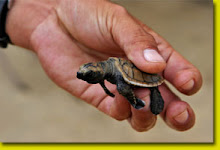Eating with Tension, Cancerous Marriage, Milk and Diabetes
Ecology -- Oncology -- Immunology -- Privacy
By Charles Q. Choi, JR Minkel, Lisa Stein, Nikhil Swaminathan, David Biello and Keren Blankfeld Schultz
Eating with Tension
The long, thin beaks of shorebirds called phalaropes are no good at sucking up water and any tasty crustaceans within. Instead they rely on the attractive force of liquid known as surface tension to ferry prey upward. The birds first swim in small, fast circles on the surface of the water, creating a vortex that pulls creatures up within their reach. They next peck at the water and then rapidly open and close their beaks. This scissoring motion both pulls and squeezes droplets, about two millimeters in size, and moves them from the tip of their beaks into their mouths. In experiments with mechanical beaks, scientists at the Massachusetts Institute of Technology and the French National Center for Scientific Research find that the droplets do not move well if the water contains oil, detergents and other pollutants that alter water’s surface tension. Draw in the findings from the May 16 Science.
The fusion of tumor cells with white blood cells may be the secret behind how cancer spreads around the body. Such hybrids can combine white blood cells’ natural ability to migrate with cancer’s proclivity for uncontrolled cell division. The fusion theory was first proposed in the early 1900s.  In research spanning 15 years, Yale University scientists merged white blood cells with tumor cells, leading to remarkably metastatic hybrids that were lethal when implanted into mice. They later found that such hybrids occur naturally in mice. In recent studies of cancer patients who received a bone marrow transplant, genes from the marrow’s white blood cells were found in the patient’s tumor cells. Such fusion might occur after white blood cells engulf tumor cells. By viewing this fusion as another disease imposed onto tumor cells, scientists could devise new therapies against metastasis, the researchers say in the May Nature Reviews Cancer.
In research spanning 15 years, Yale University scientists merged white blood cells with tumor cells, leading to remarkably metastatic hybrids that were lethal when implanted into mice. They later found that such hybrids occur naturally in mice. In recent studies of cancer patients who received a bone marrow transplant, genes from the marrow’s white blood cells were found in the patient’s tumor cells. Such fusion might occur after white blood cells engulf tumor cells. By viewing this fusion as another disease imposed onto tumor cells, scientists could devise new therapies against metastasis, the researchers say in the May Nature Reviews Cancer.
 In research spanning 15 years, Yale University scientists merged white blood cells with tumor cells, leading to remarkably metastatic hybrids that were lethal when implanted into mice. They later found that such hybrids occur naturally in mice. In recent studies of cancer patients who received a bone marrow transplant, genes from the marrow’s white blood cells were found in the patient’s tumor cells. Such fusion might occur after white blood cells engulf tumor cells. By viewing this fusion as another disease imposed onto tumor cells, scientists could devise new therapies against metastasis, the researchers say in the May Nature Reviews Cancer.
In research spanning 15 years, Yale University scientists merged white blood cells with tumor cells, leading to remarkably metastatic hybrids that were lethal when implanted into mice. They later found that such hybrids occur naturally in mice. In recent studies of cancer patients who received a bone marrow transplant, genes from the marrow’s white blood cells were found in the patient’s tumor cells. Such fusion might occur after white blood cells engulf tumor cells. By viewing this fusion as another disease imposed onto tumor cells, scientists could devise new therapies against metastasis, the researchers say in the May Nature Reviews Cancer.A Milk-Diabetes Connection?

Some research has suggested formula containing cow’s milk protein could raise an infant’s risk of later acquiring type 1 diabetes. A new study by Marcia F. Goldfarb of Anatek-EP, a protein research laboratory in Portland, Me., posits a mechanism that may be at play. She notes that a newborn’s immature immune system may destroy the human protein glycodelin in a mistaken effort to eliminate the similar cow’s milk protein. This error could result in the overproduction of T cells, which help to protect the body against infections. The overproduction could attack the insulin-producing cells of the pancreas and trigger diabetes, she wrote in the June 6 Journal of Proteome Research of the American Chemical Society. A large, international randomized trial called TIGR now under way should help settle the question of cow’s milk and diabetes risk.



1 comment:
Feel good......
Post a Comment